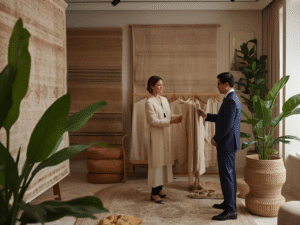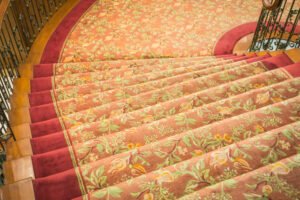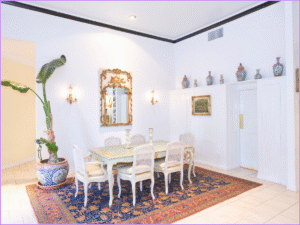Rugs aren’t just covering floors; they’re becoming a focal point for interior styling. With the growth of well-curated and customized interiors, more and designers are recognizing that rugs are the base of a room’s atmosphere and utility. The process of designing your own rug collection is a great way to show off your creative flair as well as tell compelling stories and create your own niche in the field in interior style.
This guide will guide you through every step of the process from setting your goals to launching your collection with success.
Define Your Vision and Aesthetic
Every design is a masterpiece that begins with clear thinking. Before beginning to sketch make sure you know the principles of design that will define your collection.
- Nail Down Your Design Philosophy
Pick the main design that you want to incorporate into your collections. Do you want to go for minimalist design, bohemian-inspired style, or more traditional elegant? This choice will form the stage for each style decision in the future.
- Find Inspiration
Find inspiration in the arts, nature travel, trends, or even travel. The motifs on your boards can help you visualize your concepts. For instance, platforms such as Pinterest are great for collating patterns, colors and patterns that align with your ideas.
- Balance Trends and Timelessness
While designing to meet the latest fashions can be thrilling designing pieces that have enduring appeal will ensure that your collection is relevant for years to come. Mix trendy patterns and palettes with classic styles for a balanced collection.
Know Your Audience
Knowing who you’re designing to appeal to is vital. An understanding of the person you’re designing for’s requirements, lifestyle and limitations in space will determine the various aspects the collection.
- Who Are They?
Are your dream customers urban homeowners, creative interior designers, or luxury boutique hotels? Each type of customer has specific specifications that impact dimensions, material and design styles.
- Lifestyle and Functionality
Rugs that are designed to fit your the demands of everyday life. Families with kids may require resistant to staining or stains and pet owners may prefer rugs with a low pile. The most luxurious spaces can accommodate silk, or hand-knotted rug designs to create a lavish look.
- Customization Demand
Many customers are seeking carpets that are compatible with room dimensions or a specific color scheme. Provide options for customization, such as dimensions, colors or patterns to satisfy their individual preferences.
Choose Your Materials and Techniques
The production methods and materials will significantly affect the quality and appearance of your rug. Opt for a rug made of fibers and workmanship that match both the aesthetics and functional aspects.
- Select the Best Materials
The most popular options are wool or cotton, jute or silk. Each has its own distinct characteristics:
- Understand Rug Weaving Techniques
Combine your designs with methods that compliment your designs with techniques that complement. Every type of weave produces a distinct appearance and level of durability:
- Hand-tufted Rugs: The best choice for patterns that are textured and easy to make
- Hand-knotted Rugs: The perfect choice for exquisite, luxurious artworks
- Flatweave Rugs: Ideal for minimalist and lightweight design.
- Sustainable Sourcing Matters
Modern buyers value sustainability. Choose ethically-sourced and eco-friendly materials that appeal to conscious consumers while reducing their environmental impact.
Sketching and Designing Your Collection
Once you’ve identified your ideas and the materials you’ll need then bring your vision to life using sketches and digital illustrations.
- Capsule or Full Collection?
Begin small with your first collection. You should aim for three to five rug styles to see if the market is ready. In the future, you can grow depending on the demand of customers.
- Play With Color, Motifs, and Scale
Play around with complimentary designs, intricate patterns and variations in the size of your rug. Choose your design from vibrant and bold to neutral and subtle.
- Use Design Software
Tools such as Adobe Illustrator or specialized textile design software can assist you to create precise digital sketches. If you’re not a pro at these, think about hiring textile designers or illustrators who can turn your ideas into the real world.
Collaborate With Skilled Artisans or Manufacturers
A rug collection can only be as unique as the craftsmanship. Collaboration with skilled artisans will ensure that your ideas are brought to life with care for quality and detail.
- Find Trusted Rug Makers
Areas such as Jaipur, Bhadohi, and Panipat in India are famous for their exceptional rug making. They are experts in hand-knotted and hand-woven rug making.
- Create Prototypes
Prior to mass production, you should test your designs on samples in order to refine your design. This will ensure that the quality, durability, and colors as well as design elements meet your expectations.
- Build Long-Term Partnerships
Building trust and building relationships with manufacturers or artisans can result in more smooth projects, and a more consistent standard of quality for your collections.
Quality Control and Testing
Before you can launch your rugs rigorous quality tests will ensure that the rug you sell to your clients is perfect.
- Check Texture and Density
Check your rug’s pile density and thickness to ensure they are comfortable and are able to withstand wear.
- Test for Shape and Color Retention
As time passes, rugs may change shape or become faded. Conduct stress tests to be sure that your rugs maintain their quality.
Styling Tips for Each Rug Design
Help your customers visualize their carpets in their homes by giving styling suggestions.
- Room Settings
Give suggestions on where each design is best to make an accent piece for your living space as well as a comfy anchor for the bedroom or a chic hallway runners.
- Layering and Mixing Tips
Learn to teach customers how to layer rugs, or mix and mix patterns, colors and textures to create spaces that are cohesive.
Branding, Storytelling, and Launching
Engage your audience emotionally through using storytelling to build your brand.
- Name Your Collection
Choose meaningful, memorable designs with meaningful names to create connections with customers.
- Show Behind-the-Scenes Stories
You can share the design and process on platforms such as Instagram or your own website. This helps build confidence and appreciation for your rugs.
- Launch Through Multiple Channels
Engage people with social media-based campaigns and cooperation with interior design professionals or online exhibitions. Utilize platforms such as The Ambiente Etsy and Pepperfry to reach out to a large market.
Take That First Step Toward Designing
The process of designing and launching the rug collection is a combination of imagination and planning. If you follow these guidelines, you’ll not only convey your own unique style but also satisfy the demands of your potential clients.
If you’re looking to start do not hesitate to speak with professionals or get in touch with expert artisans to you bring your ideas to life. Remember that every collection starts with one idea.
Read More:
- How to Start a Rugs and Carpet Business?
- How to Create a Rug Business Plan in India (2025)
- How to Source the Right Rugs and Carpets for Your Interior Projects
- How to Set Up Rug Production and Manufacturing for Your Interior Brand
- How to Build a Pricing Strategy and Manage Inventory for Your Rug Business: A Complete Guide
- How to Plan Your Rug Collection Around Seasonal Interior Trends?
- How to Build an Online Store for Your Rug and Carpet Business
- How to Market Your Rug and Carpet Business Online?
- How to Use AI to Predict Interior Design Trends for Your Rug Collection?





